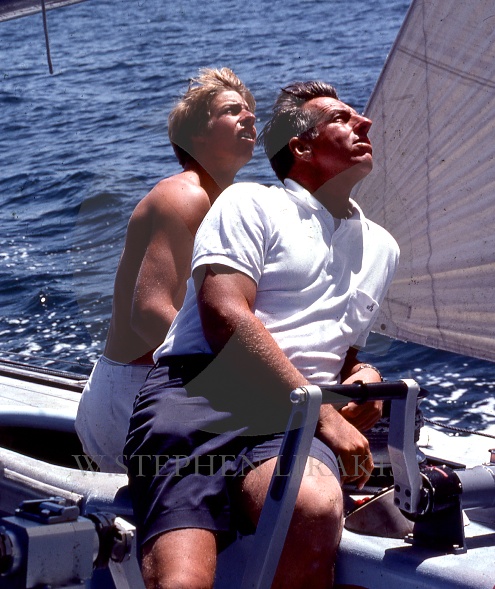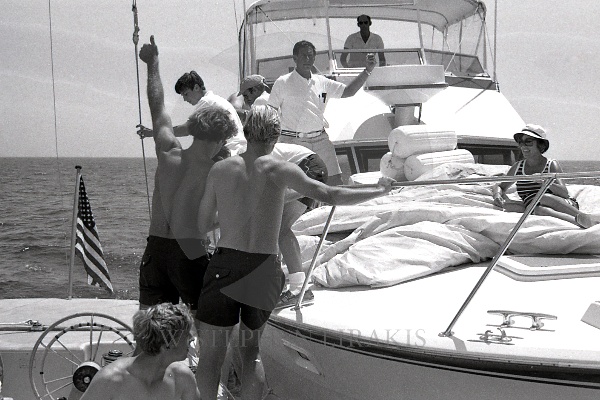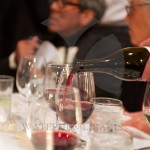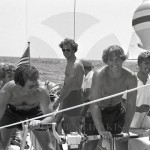from Scuttlebutt:
Lessons Learned, Myths Disputed and, Oh, that Nationality Thing by the Guy That Screwed That Part Up
By Andy Rose
First, congratulations to Commodore Norbert Bajurin and the Golden Gate YC and Larry Ellison’s Oracle Team USA on an incredible comeback and successful second defense at the 34th America’s Cup. Congrats also to the Hamilton Island Yacht Club of Australia as Challenger of Record for the next Cup and the GGYC for accepting that challenge.
I think it is only fitting that after the most amazing America’s Cup, that the Challenger of Record for the next edition is from a country that held what generally is considered the best previous America’s Cup, in 1987. While Fremantle is about as far from Hamilton Island as you can get and still be on the Australian continent, they are all Aussies and it will be great to have them back!
Of course, I am somewhat prejudiced towards Australia given that I sailed as tactician on Australia I in the 1977 Cup, the first American to sail for another country. As America’s Cup Management head Iain Murray said to me, “You’re the guy that screwed this up”.
So, with regard to reflection, I might as well start with the nationality rule:
A Nationality Rule Should be Reinstated ?
I had good reasons for what I did way back then in the mists of time but I think the complete abandonment of the rule was a mistake. Given various concerns expressed by others, perhaps a sliding scale with three minimum percentages of national crew based on things like a country’s participation in major ocean races, Olympic Games, sailors with ISAF Match Race Rankings and to allow smaller countries to still compete, perhaps some credit for population or GNP. So, an inexperienced country might only have to have 33% national crew, an experienced but small country 50% while the US, Australia, New Zealand, Britain, etc. might have to have 66%. Obviously no one is going to listen to me, but some minimum percentage should be reinstated.
Don’t Give Up on “Majestic” –
I believe Russell Coutts was quoted as saying the 72’s were a mistake and they should have used the 45’s or at least something smaller but they thought they needed the boats to be big enough to be “majestic” for the America’s Cup. Russell, you weren’t wrong, you do need boats big enough to be a bit “majestic” and while we don’t need mega?yachts or 100 footers, the boats should be quite a bit larger than a typical ocean racer. Don’t underestimate the “wow” factor.
The TV was Great But Don’t Let That “Tail Wag the Dog” –
You can paint a NASCAR type number on the side of a hull but that doesn’t make it NASCAR or command those type of TV ratings. Congrats to Stan Honey and his team for the truly fabulous TV graphics but despite his best efforts, it doesn’t look like TV revenues are ever going to be a huge part of funding America’s Cups, at least if US viewership is a factor. Necessary, yes; fun to watch, yes: important for sponsor fulfillment, yes; providing significant revenue to share with teams, probably not.
If that is true, then it seems to me that you start with designing the best sailboat race you can and then perhaps make a few modifications to accommodate television, not the other way around. And what’s wrong with billionaires anyway? For better or worse, rich people have always been integral to getting Cup campaigns going and probably always will be.
The Catamarans Were the Big Draw, Monohulls Would Have Bored the Audience –
The cats were indeed spectacular and there were more lead changes than ever in the Cup. But does that mean that a 70?75 foot planing monohull with identifiable helmetless crew members in various positions on the boats grinding, trimming, hiking and setting and dousing huge spinnakers (instead of lined up in a row grinding hydraulics) with the boats a lot closer than 150?500 meters apart as was often/mostly the case in this Cup would not have attracted the same excitement on shore and on TV?
Match racing maxi?boats in the old days was pretty exciting, but a 5 minute match race pre?start among two modern boats in 25 knots of breeze would be breathtaking – both literally and figuratively – and both such boats planing within a boat length or two of each other at 20?25 knots of speed downwind with the spray flying wouldn’t be too bad a visual either. And finally, don’t underestimate the venue. San Francisco provided without a doubt the best visuals of any America’s Cup and I believe that added greatly to the visual impact of the Cup races and that would have been true no matter what boats were used.
Celebrate the Sport –
I cringed at a couple of the commentators statements to the effect that “now this is a real sport” as if only 72 foot catamarans sailing 20 minute races was “real” and things like, for example, the Volvo Round the World Race, the Olympics, the Sydney?Hobart, Bermuda or Fastnet Races, the World Match Race Tour, and frankly even those races in which us amateurs still sail offshore are some kind of quaint hobby. Sailing is a real, difficult, sometimes dangerous and incredibly complex sport and it seems to me that the America’s Cup of all things should highlight and honor that.
As Roger Vaughn wrote about this Cup, “We are still calling it sailing, calling it the future. The speed and the technology is intriguing, even momentarily arresting. But is it sailboat racing?” Well, of course it is part of our diverse sport, but couldn’t we include a few more parts of the sport in the next Cup? While every once in a while a “tactic” broke out, for the most part, the races were drag races and the only sail changes were the rare deployment of a code zero on a furler. And the fact is that the early races weren’t really close and neither ultimately were the later ones, the only difference was that one boat was faster at first, the other later.
Conclusion –
There were moments at the 34th America’s Cup that were nothing short of spectacular and exciting, especially the first mark roundings. But, since it sounds like these boats are about to be history due to expense and safety concerns, if the next Cup is in soft sail multi?hulls, logic would say that they are going to be somewhat less spectacular and yet the drawbacks of multi?hulls will still be there (lack of maneuverability thereby allowing less tactics; just as boring to watch as monohulls in light air; generally very large leads/deficits).
Yes, I know monohulls have drawbacks too but I’d sure love to see the boats I described above given a try. They’d be cheaper, more easily accessible to more countries (gotta have a bunch of challengers this time and it would probably help Oracle a lot to actually have competition to defend) and I think just as spectacular to watch in the long run. Of course, many of the great innovations from this Cup should continue including the World Series races in non?Cup years (something like Russell’s RC?44’s would be a good vehicle), and shorter courses than in the “old days”. I truly hope it will be held in San Francisco again and can imagine one race a day, about 1 to 1 1/2 hours long with the first weather leg about a mile and a couple of short reaches requiring gybes and/or sets of asymmetric chutes right in front of GGYC and the boundary on the City shore even closer. Trust me, that would require just as good an athlete as was touted and required on the 72’s this year.
Having said that, I’m old and obviously out of it and have absolutely no influence on anyone. But, just some thoughts from someone who still sails actively, has been involved in a number of Cup campaigns, and still remembers them as highlights of my life. But whatever the venue and boats next time, I will support GGYC and Oracle and can hardly wait for the next Cup.

Andy Rose (center) at the 2013 Governor’s Cup, the 47th Annual International Junior Match Race Championship
I sailed against Andy in college and then again in 12 meters later in life. I have made my share of criticisms, but The America’s Cup was a success. We, in my opinion, can never go back from this spectacle.
As I have stated before, I believe that there will be at least one foiling dinghy class in the Olympics; not in 2014, the the following one.

 Carl Eichenlaub passed away early this morning. In a sport full of iconic figures, he stands with the best and most unique. Few people in the sport have the breadth and depth of his talent.
Carl Eichenlaub passed away early this morning. In a sport full of iconic figures, he stands with the best and most unique. Few people in the sport have the breadth and depth of his talent.













































